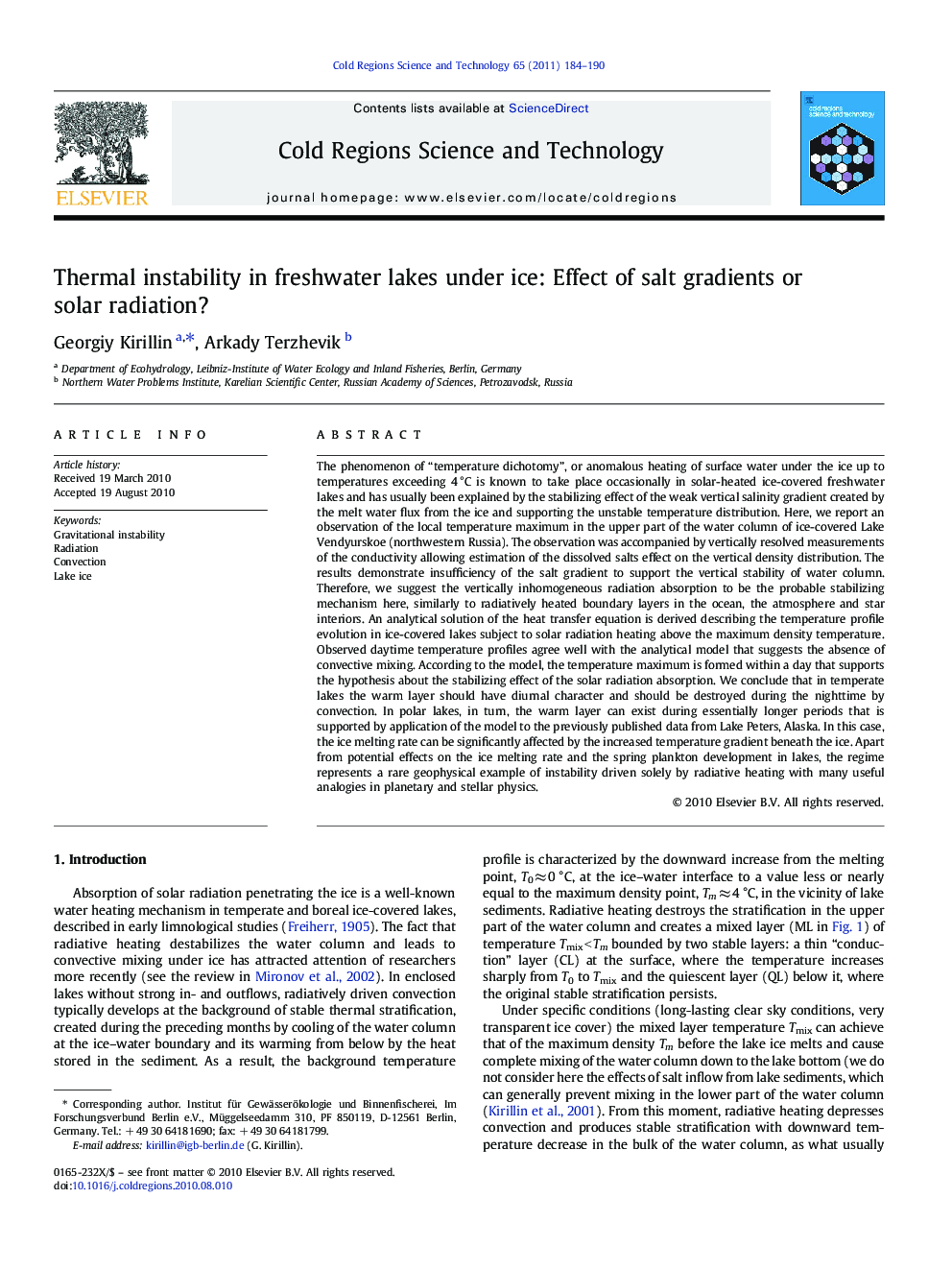| کد مقاله | کد نشریه | سال انتشار | مقاله انگلیسی | نسخه تمام متن |
|---|---|---|---|---|
| 4676163 | 1347740 | 2011 | 7 صفحه PDF | دانلود رایگان |

The phenomenon of “temperature dichotomy”, or anomalous heating of surface water under the ice up to temperatures exceeding 4 °C is known to take place occasionally in solar-heated ice-covered freshwater lakes and has usually been explained by the stabilizing effect of the weak vertical salinity gradient created by the melt water flux from the ice and supporting the unstable temperature distribution. Here, we report an observation of the local temperature maximum in the upper part of the water column of ice-covered Lake Vendyurskoe (northwestern Russia). The observation was accompanied by vertically resolved measurements of the conductivity allowing estimation of the dissolved salts effect on the vertical density distribution. The results demonstrate insufficiency of the salt gradient to support the vertical stability of water column. Therefore, we suggest the vertically inhomogeneous radiation absorption to be the probable stabilizing mechanism here, similarly to radiatively heated boundary layers in the ocean, the atmosphere and star interiors. An analytical solution of the heat transfer equation is derived describing the temperature profile evolution in ice-covered lakes subject to solar radiation heating above the maximum density temperature. Observed daytime temperature profiles agree well with the analytical model that suggests the absence of convective mixing. According to the model, the temperature maximum is formed within a day that supports the hypothesis about the stabilizing effect of the solar radiation absorption. We conclude that in temperate lakes the warm layer should have diurnal character and should be destroyed during the nighttime by convection. In polar lakes, in turn, the warm layer can exist during essentially longer periods that is supported by application of the model to the previously published data from Lake Peters, Alaska. In this case, the ice melting rate can be significantly affected by the increased temperature gradient beneath the ice. Apart from potential effects on the ice melting rate and the spring plankton development in lakes, the regime represents a rare geophysical example of instability driven solely by radiative heating with many useful analogies in planetary and stellar physics.
Journal: Cold Regions Science and Technology - Volume 65, Issue 2, February 2011, Pages 184–190